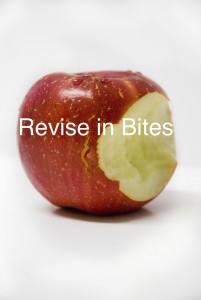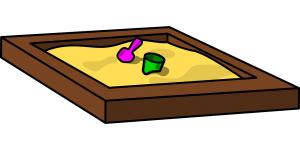“It’s hard to see a middle ground between marking up your book line by line and doing a complete rewrite. It’s also hard to know what to fix in revision, and even harder to know when that process is finished.” —Gabriela Pereira
In the September 2015 issue of Writer’s Digest, I read Gabriela Pereira’s article, “The Great Revision Pyramid. Pereira’s pyramid offers help to revise our books without being overwhelmed or confused. We can accomplish revisions in bites, or layers.
Pereira says by making several passes through our manuscript, focusing on one important element each time, our revisions should go faster, be less confusing, and be more effective.
5 Revision Layers
Layer 1: The Narration
-
Voice and Point of View (POV) – Pereira says this important pass through our manuscripts needs to be first. She suggests we make notes on the way we tell our story, on what will and won’t work for the reader experiencing our story.
- Quote from “The Great Revision Pyramid”
- “Once you have decided which type of narration you want, you will likely need to ‘reboot’ the scenes that depart from that style or POV so that everything is consistent.”
Layer 2: The Characters
- Quote from “The Great Revision Pyramid”
- “No matter how well you think you know your protagonist, sometimes when you finally look over your work and see him anew on the page, suddenly he feels … flat. Unmotivated, even, though you know the motivations are there.”
-
If we’re having problems bringing our character alive in his motivations and goals, Pereira suggests we take him to a “sandbox” and put him into scenes outside our story to learn more about him.
- She affirms principles about secondary characters. If they don’t support the main character’s story and growth arc, they’re expendable.
Layer 3: The Story
- Pereira says one of writers’ biggest mistakes is to focus on plot points before characters.
- Quote from “The Great Revision Pyramid”
- “The danger with this approach is that it forgets that characters are the driving force in your story. When you fixate on a rigid plot structure, you leave character by the wayside. But your story exists because of decisions your character makes.”
-
So, Pereira says, if we’re having trouble plugging plot holes, we should revisit our characters.
Layer 4: The Scenes
- This is the time to work on world-building, description, dialogue, and theme.
- Quotes from “The Great Revision Pyramid”
- “Does [the world] feel real, or do you throw a lot of information at the reader but fail to show the world in action?”
- “By this stage of the revision, you should instinctively know how each character speaks. … Trim your dialogue to the barest minimum that still captures the essence of each scene.”
- “Now it’s simply a question of making sure that every scene you’ve written relates to that over all theme.”
Layer 5: The Cosmetics
- This is when we go to the line level and proofread and edit.
- Pereira suggests doing these edits last because we’ll avoid wasting time on scenes we may have deleted in the other revising layers.
Try this method of revising your story in bites. Click to tweet.
How do you revise your rough draft into the best book you can write?








 RSS - Posts
RSS - Posts



This is so good! Thank you!
Karla, I thought Gabriela Pereira’s layers are good too. If you can, read her full article in Writer’s Digest.
Great advice Zoe!
Good luck and God’s blessings.
PamT
Hi Pam, Gabriela Pereira’s full article has more. If you have access to a Writer’s Digest, read through it.
Zoe, I found this really helpful. What a clear and concise revision method, it really could save hours of unfocused work. Thanks. Cheers
Marilyn, I agree about saving time with “unfocused” work. I’m going to use it on the short story I’m working on. I think a smaller project will help me learn the editing layering better.
In my efforts to declutter, I just made myself toss boxes of Writers Digests and The Writer. Now you are naking me regret getting rid of them.
Nevertheless, thank you for giving us the digest.You always bring something helpful to the table.
Jane, I’m sorry I made you regret tossing your old Writer’s Digests, but I think you did a good thing. I’m glad I’m taking the time to read my pile and then tossing them.
I had years of them, so there was no time to read them all, though I had read and highlighted many. I have to trust that I got what I needed, and depend upon current resources–like your excellent blog!
Jane, I’m so glad you said, “I have to trust that I got what I needed.” I think this is so key for me, not thinking I have to print, save, and capture every online or magazine article I read. If I spent the time reading more articles instead of trying to save and capture, a lot of the information will be repeated and I’ll get it. Now I try to get one thing out of an article and not worry about all the other good stuff. It’ll come.